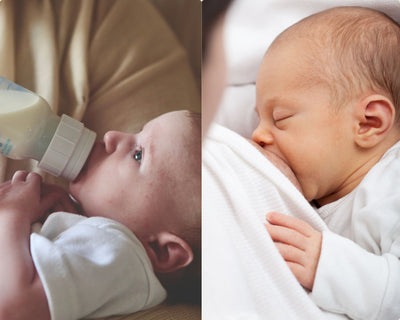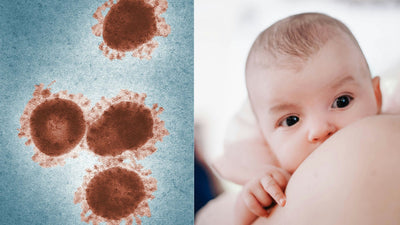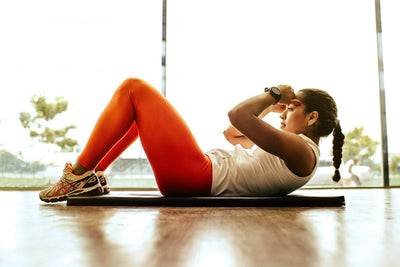The 3 Questions You Have About Donating Breast Milk
By Jordan Berns
Here at Lactation Lab, we believe that “fed is best.” There are lots of choices when it comes to nourishing your little one! When parents who prefer to give their babies breast milk cannot produce it on their own, they may turn to breast milk donated by lactating women. Donations can be done through a licensed lab or even through online communities and forums.
1. Who Needs Breast Milk Donations?
Donated milk is often used by premature, sick, and hospitalized babies. Infants who are intolerant to cow's milk protein and react to formulas may also need breast milk. Additionally, small portions of donated milk are designated for scientific testing. One donation goes a long way: NICU babies may drink less than one ounce of breast milk in a session. Plenty of babies can benefit from a single donation!
Breast milk donations can help heal babies all around the globe.
If you donate to the International Breast Milk Project, your milk might go on a global adventure. This organization brings breast milk to babies in the United States and South Africa. The need for milk varies by culture and location.
In Durban, South Africa, there is a demand for breast milk for HIV-positive babies. In Cape Town, orphaned premature babies generally have the greatest need for milk. In the United States, premature babies tend to receive most breast milk donations. It can be added as a fortifier to formula to help those who aren’t gaining enough weight with breast milk alone. Preemies are a higher risk for necrotizing enterocolitis (NEC), which is an injury or inflammation of the intestines and one of the leading causes of death in the NICU. This threat can be significantly reduced by exclusively breastfeeding.
2. Why Donate Breast Milk?
Just because a woman is able to give birth, doesn’t mean she can produce breast milk. Everybody and every pregnancy might be different. Some conditions that may make it difficult to produce enough breast milk are mastectomies, breast reductions, a mother’s medications, and her medical treatments, such as chemotherapy.
Women who donate breast milk do so for a variety of reasons. Some who may choose to donate have an oversupply or were a surrogate. Others still might have lost their baby and feel the desire to make a sacrifice for the health of another’s child. For the latter category, there are additional resources like Mother’s Milk Bank in California, that offers bereavement support while helping grieving mothers donate milk.
3. How do Scientists Make Breast Milk Safe for Recipients?
Great pains are taken to make sure that breast milk that goes out to hungry babies is free from viruses and bacteria. The first point of control is verifying the health of the donors. Women go through intense screening that includes phone interviews, blood tests, fully documented health histories, and consent forms. Donors are requested to avoid medications and herbal supplements. Smoking and drinking and taking prescription medications while donating is prohibited.
After the milk is pumped, it needs to be refrigerated quickly. If the milk isn’t dropped off immediately after pumping, it needs to be frozen at temperatures below -4° Fahrenheit (-20° Celsius). It is important that hands are always washed, and pumps are kept clean and sterile.
Is your baby safe to drink pasteurized donor milk?
Then the milk moves to the labs. The gold standard for breast milk treatment in the United States and Canada is set by the Human Milk Banking Association of North America (HMBANA). The European Milk Bank Association establishes their model and regulations for over 20 European countries. Unlicensed groups, such as Eats on Feets, MilkShare, Human Milk 4 Human Babies (HM4HB), have different protocols and safety measures in place, but do not have nationalized standards of accountability.
Milk banks, such as the HMBANA, rely on Holder pasteurization (HoP) to ensure that babies in need always get what they need in the safest way possible. Breast milk is heated to 62.5° Celsius/144.5° Fahrenheit for 30 minutes. Then, it is cooled to room temperature. The Holder Pasteurization is proficient at combating viruses and bacteria, even HIV and Ebola, though some believe it’s less than ideal at wiping out strains of Bacillus cereus and hepatitis B.
A recent study in Austin, Texas revealed that 87% of unpasteurized breast milk samples grew Staphylococcus (which causes Staph infections). Only 7% of pasteurized breast milk had a bacterial presence. This Texan study, in conjunction with a Spanish experiment (2010), discovered that strains of Bacillus cereus (known to cause food poisoning) were found in 7% of their pasteurized samples. However, these samples had such a small viral load that it would be near impossible for it to transmit infection. Ultimately, it was decided that pasteurized breast milk is safe source of nutrition to help babies grow big and strong.
British psychologist and childcare expert, Penelope Leach, once said “Loving a baby is a circular business, a kind of feedback loop. The more you give the more you get and the more you get the more you feel like giving.” Donating breast milk is just one of the many ways women and mothers make sacrifices and lift up other parents and the babies they love.






